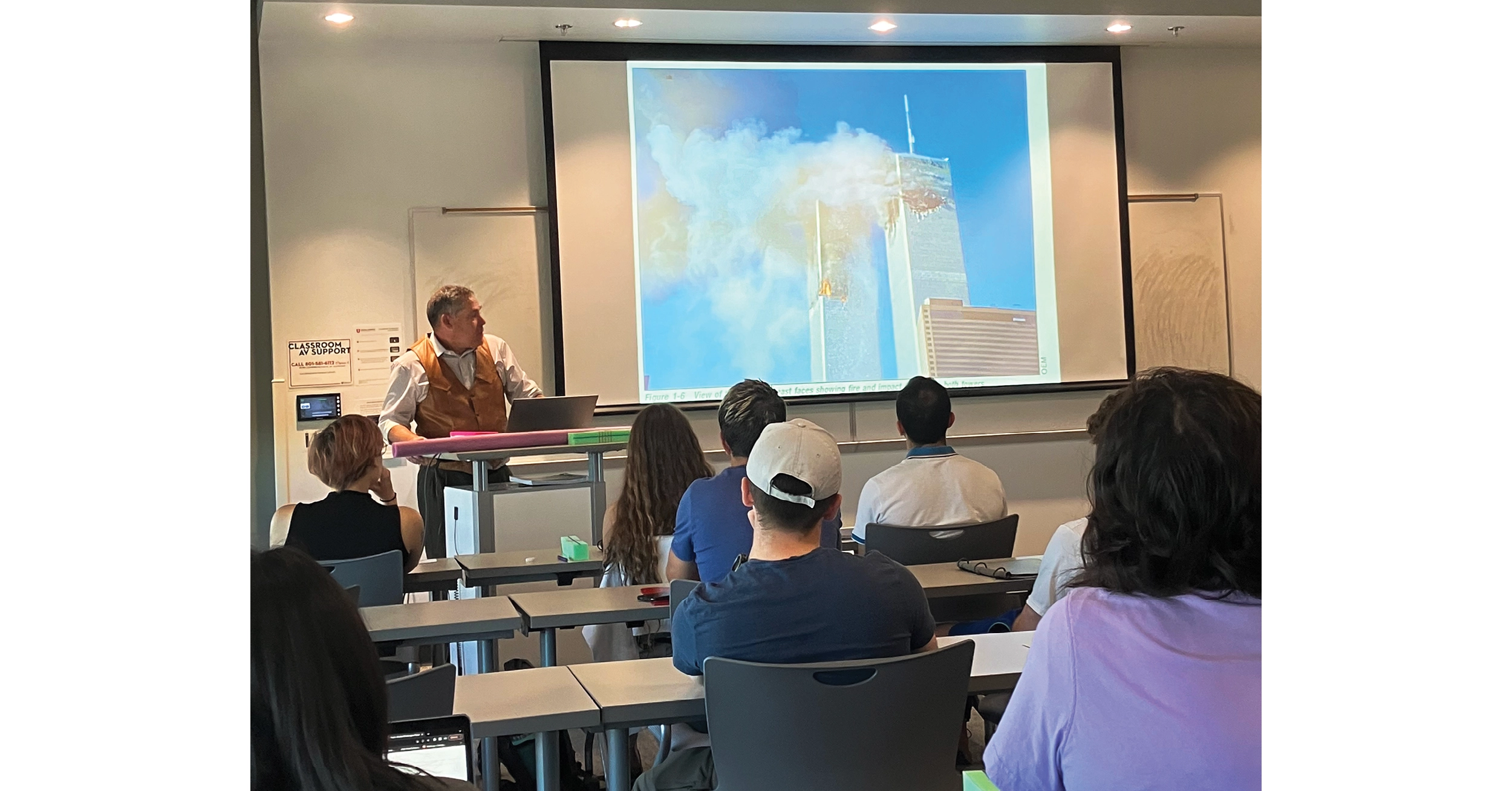Dr. Schmucker details collapse sequence of the WTC’s twin towers on the 22nd anniversary of 9/11
Today, September 11th, 2023 marks the 22-year anniversary of the tragic collapse of the World Trade Center’s twin towers. Dr. Douglas Schmucker, both an esteemed professor and professional in the field of structural engineering, presented a review of the critical collapse sequence in the second-year course CvEEN 2140: Strength of Materials.
Drawing upon the principles of structural mechanics and utilizing the FEMA’s Building Performance Summary, Dr. Schmucker combined his more than 30 years of investigative engineering and teaching to aid students in understanding the “domino” effects that led to the collapses.
“In investigative engineering, we don’t usually have smoking guns,” noted Dr. Schmucker, acknowledging the scarcity of definitive data left in the aftermath of the catastrophic attacks. He emphasized that investigative engineering relies on informed speculation, where a synthesis of available information and sound engineering principles is crucial.
Employing this method, Dr. Schmucker, with the aid of the official Building Performance Summary, depicted the collapse sequence as most plausibly resulting from a combination of:
- impact and debris damage to both structural members and fire retardant on those members,
- partial collapse of floors due to either heat from the building content fires or impact damage,
- and then with failure of the floors buckling of the columns.
Buckling of exterior columns, which can be seen directly in video and photographs, rapidly progressed to “pancaking” of floor after floor as the energy of elevated floors moving downwards could not be absorbed.
The populist view suggests that the steel melted. He explained, based on the available evidence, that the fireballs from the jet fuel while dramatic were not explosive (which would have taken microseconds instead of the 2 seconds observed on tape) and did not cause significant structural damage, that the jet fuel had mostly been consumed within 5 minutes of the initial ignition of the vaporized fuel. Instead, the primary heat-related effects were from simultaneous fires on multiple floors, floors that had experienced a total loss of or compromised fire retardant and suppression systems.
“The effect on the floor system was to cause it to drape much like a hot spaghetti noodle will lose its stiffness,” said Dr. Schmucker.
At some point, either the floor system collapsed or its connection to the exterior columns ruptured. Either situation meant the loss of a critical role for the floor system: to provide lateral support for the columns. Without that “sideways” support, the columns were unbraced over two to three stories and immediately experienced a significant decrease in their buckling strength.
As someone who has dedicated numerous years to researching this topic as a structural engineer, Dr. Schmucker admitted the challenge of disentangling the intellectual fascination of the engineering intricacies from the overwhelming tragedy that claimed over 3,000 lives on that fateful day. Nonetheless, he carries the poignant responsibility of annually presenting his analysis of the towers’ collapse as a tribute to the memory of not only those fatalities but also the nearly 58,000 people estimated to be in the World Trade Center Complex that day and the more than 38,000 involved in response to the event either in the immediate or near-term of recovery. In doing so, he aims to underscore the vital role that future engineers will inevitably play in shaping a safer and more resilient future.

